The universe is a violent place. Beyond the serene beauty of twinkling stars and majestic nebulae lies a realm of cataclysmic destruction, where celestial bodies collide, explode, and tear each other apart in a grand cosmic ballet of chaos. From supermassive black holes devouring entire stars to planet-shattering impacts, the cosmos is rife with events that dwarf anything seen on Earth. Let’s dive into ten of the most incredible and terrifying examples of cosmic violence.
1. The Big Bang – The Ultimate Explosion
Arguably the most violent event in the history of the universe, the Big Bang marked the birth of everything we know. Around 13.8 billion years ago, an incomprehensibly hot and dense singularity exploded, expanding space itself and setting the stage for the formation of galaxies, stars, and planets. This wasn’t just an explosion—it was the rapid unfolding of space-time, where temperatures exceeded trillions of degrees and elementary particles formed in an instant. Even today, the residual afterglow, known as the cosmic microwave background radiation, whispers the echoes of this primordial explosion.
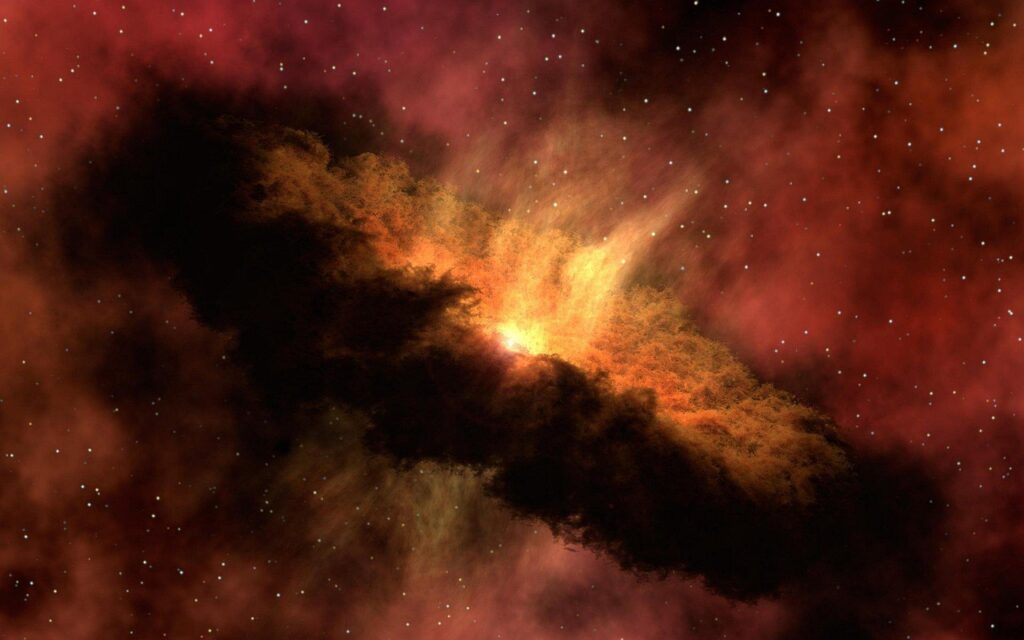
The energy released during the Big Bang was beyond human comprehension, creating a searing-hot plasma of protons, neutrons, and electrons. As the universe expanded and cooled, atoms began to form, leading to the creation of the first stars and galaxies. Scientists continue to study this event using powerful telescopes and experiments like the Large Hadron Collider to understand the origins of the cosmos and the fundamental laws that govern it.
2. Hypernovae – The Death Throes of Supergiants
While regular supernovae are already some of the most energetic events in the universe, hypernovae take this destruction to another level. Occurring when massive stars—often 30 times the mass of our Sun or more—reach the end of their life cycles, hypernovae release more energy in a few seconds than the Sun will produce in its entire lifetime. These colossal explosions can create black holes, send powerful gamma-ray bursts across the cosmos, and scatter heavy elements like gold and uranium into space, seeding future planetary systems.
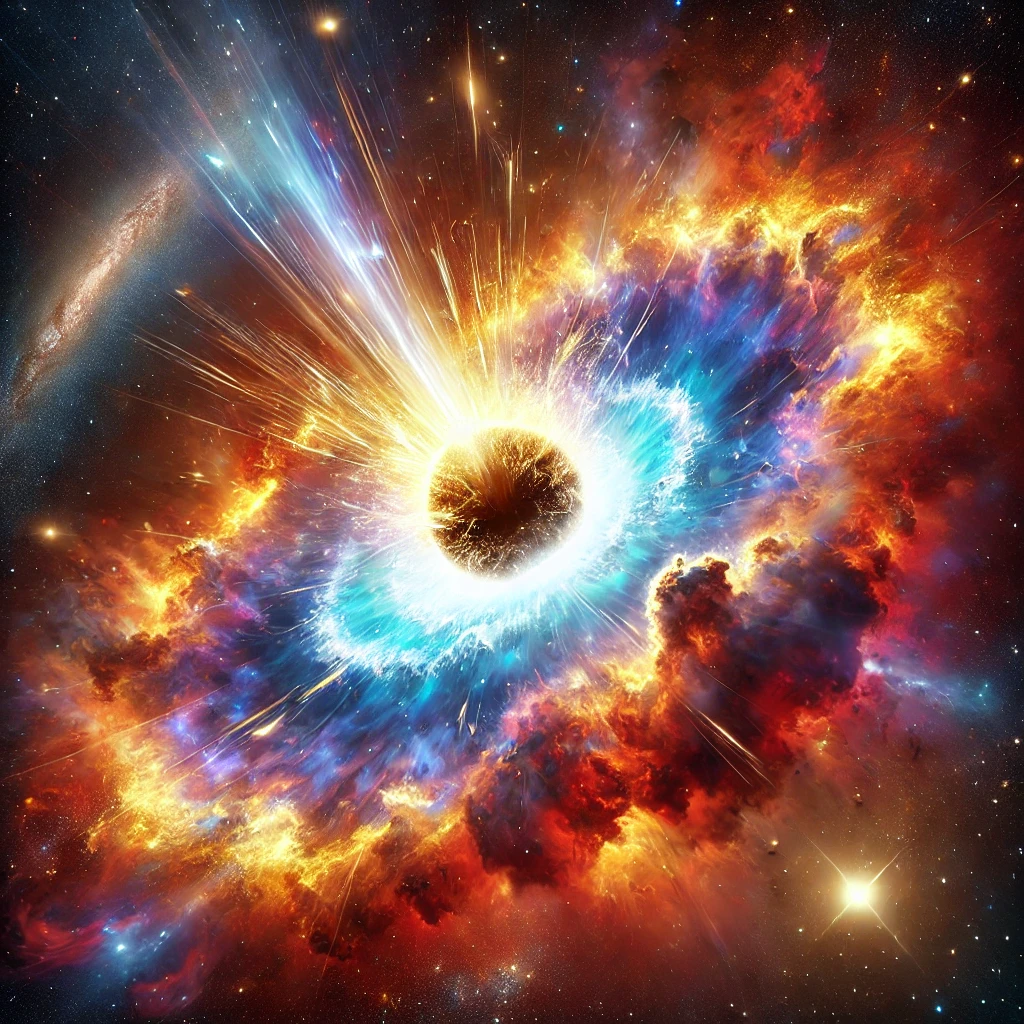
Hypernovae occur when a massive star’s core collapses under its own gravity, triggering an immense release of energy. These explosions can outshine entire galaxies for brief periods, and their shockwaves travel across interstellar space, triggering the birth of new stars. Some of the brightest hypernovae have been observed billions of light-years away, providing a glimpse into the violent deaths of the universe’s most massive stars. The remnants of hypernovae often form neutron stars or black holes, objects so dense that their gravity prevents even light from escaping.
3. The Collision of Galaxies – Titans in a Cosmic Dance
Galaxies are not static islands floating in space—they are constantly moving and sometimes collide in spectacularly violent events. When the Milky Way eventually merges with the Andromeda Galaxy in about 4.5 billion years, the two massive structures will rip through each other, flinging stars and gas into new orbits. While individual star collisions are rare due to vast distances, gravitational forces will reshape entire stellar neighborhoods, creating dazzling bursts of star formation and ultimately leading to the birth of a new, larger galaxy.
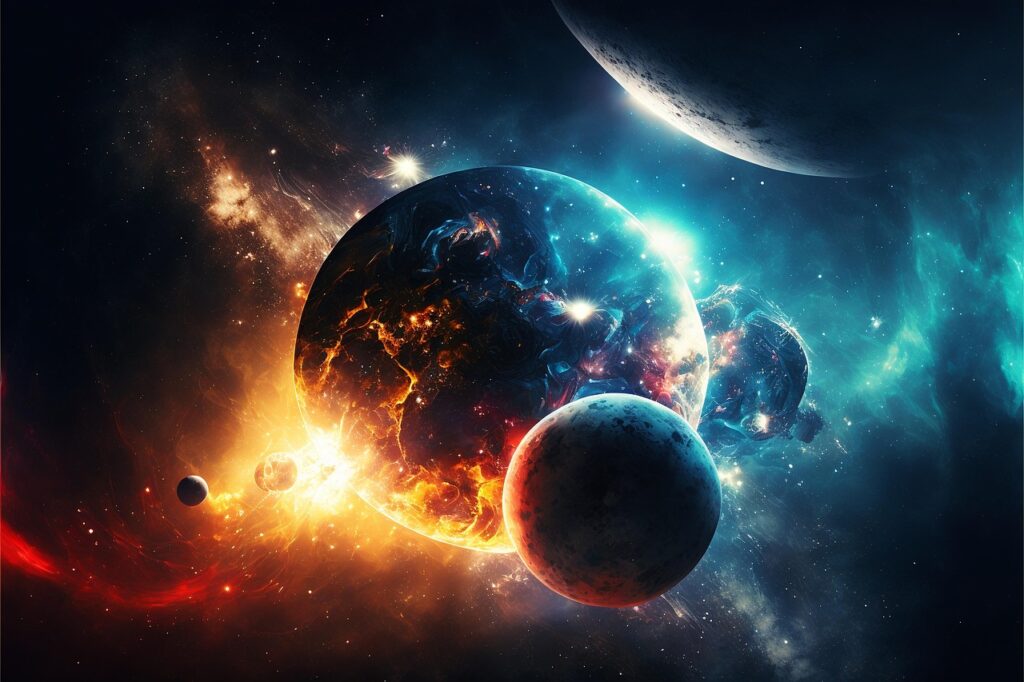
During galaxy collisions, supermassive black holes at their centers may also merge, unleashing enormous gravitational waves that ripple through space-time. These galactic interactions can trigger the formation of new solar systems, rearrange the structures of galaxies, and even determine their ultimate fates. Scientists use advanced simulations to predict how these mergers will unfold, offering a glimpse into our galaxy’s distant future. Some of the most dramatic galaxy collisions have been observed using the Hubble Space Telescope, revealing stunning images of cosmic chaos.
4. Quasars – The Most Luminous Killers
At the hearts of many young galaxies lie quasars—supermassive black holes actively consuming matter at an astonishing rate. As they suck in gas and stars, the immense gravitational forces generate swirling accretion disks that burn millions of times brighter than entire galaxies. The jets emitted from quasars can travel at nearly the speed of light, releasing enough energy to sterilize entire regions of space. Some of these jets stretch for hundreds of thousands of light-years, carving through the intergalactic medium like cosmic blowtorches.
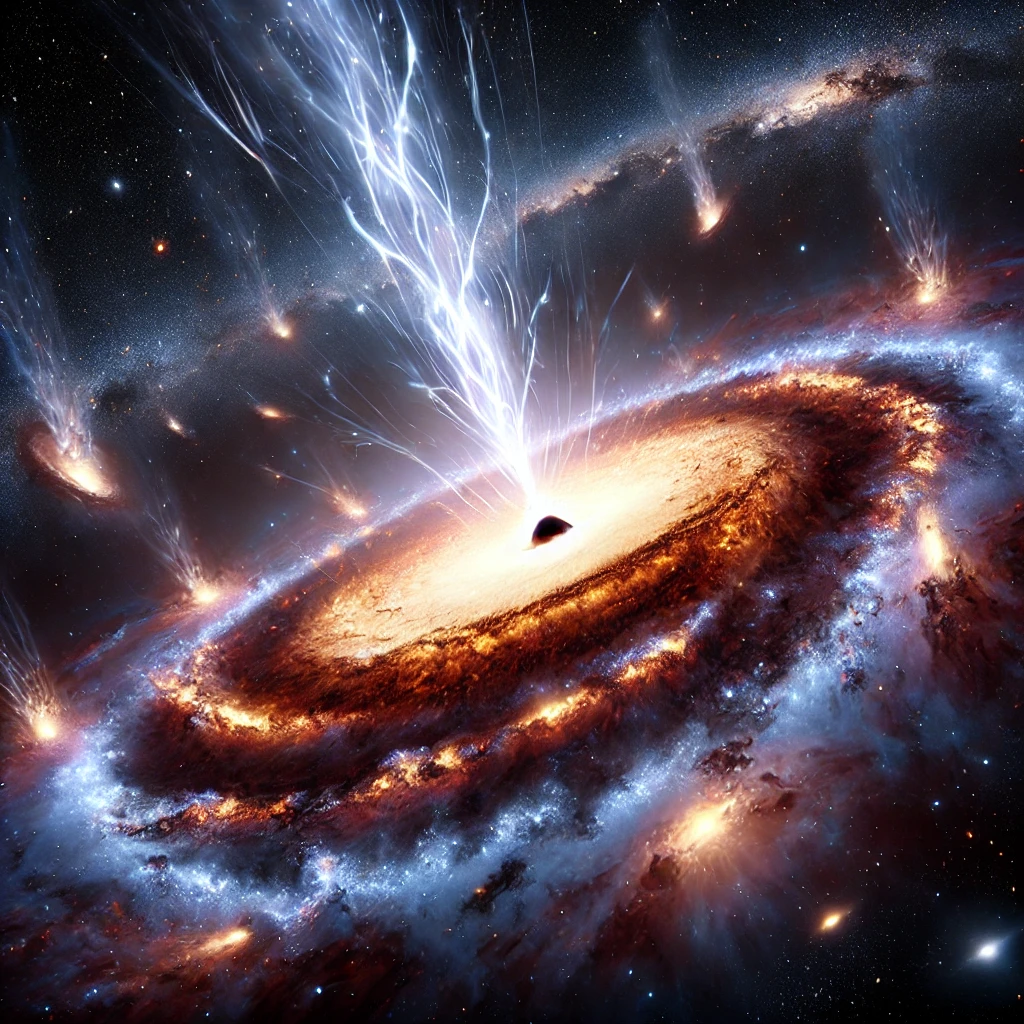
Quasars serve as beacons from the early universe, illuminating the cosmos as they consume matter with insatiable hunger. Their immense energy output can halt star formation in galaxies and influence the large-scale structure of the universe. Scientists study quasars to better understand black hole physics, galaxy evolution, and the conditions of the universe billions of years ago. Quasars have also helped astronomers map the large-scale structure of the universe by acting as cosmic lighthouses, illuminating the distribution of matter across vast distances.
5. Gamma-Ray Bursts – The Cosmic Death Rays
Gamma-ray bursts (GRBs) are the most powerful explosions known in the universe, capable of releasing as much energy in a few seconds as the Sun will emit over its entire lifetime. Often associated with collapsing hypergiant stars or the collision of neutron stars, these beams of high-energy radiation can travel billions of light-years. If a GRB were to occur within our galaxy and be directed at Earth, it could strip away the planet’s atmosphere and trigger a mass extinction event.
GRBs come in two main types: long-duration bursts, linked to hypernovae, and short-duration bursts, resulting from neutron star mergers. These events are studied using space telescopes like the Fermi Gamma-ray Space Telescope to understand their origins and potential threats to life on Earth. Some scientists speculate that past mass extinctions on Earth may have been triggered by nearby gamma-ray bursts.
6. Rogue Black Holes – Silent Cosmic Assassins
When we think of black holes, we often imagine them lurking in the centers of galaxies, feeding on gas and stars. However, some black holes break free from their galactic homes and wander the cosmos as rogue black holes, drifting undetected through interstellar space. These cosmic nomads, moving at speeds of millions of kilometers per hour, are among the most elusive and terrifying objects in the universe.
Most rogue black holes originate from violent gravitational interactions, often during galaxy mergers or the chaotic dance of supermassive black holes. When two galaxies collide, their central black holes engage in a gravitational tug-of-war, and in some cases, one of them is slingshotted away at extreme velocities—becoming a runaway black hole. Others may be born from stellar-mass black holes that were ejected from their original star systems by supernova explosions or interactions with other massive objects.
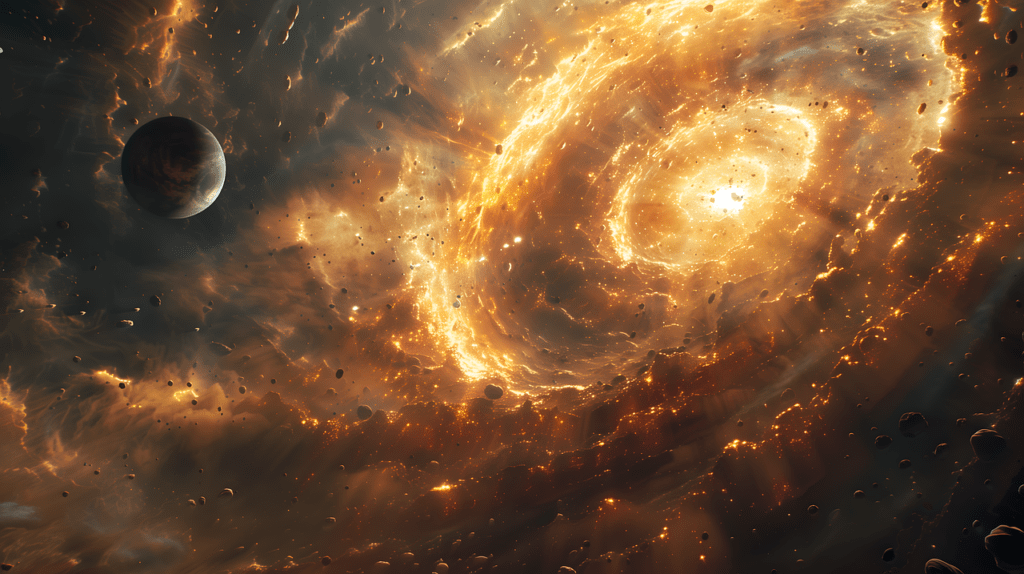
These silent assassins pose an invisible threat. Unlike ordinary black holes, which can be detected by the radiation emitted from their accretion disks, rogue black holes are nearly impossible to spot unless they begin devouring nearby gas, dust, or even unlucky stars. When this happens, they flare up in X-ray emissions, briefly revealing their presence before fading back into the darkness. If a rogue black hole were to pass through a planetary system, its immense gravity could distort orbits, fling planets into deep space, or even swallow entire worlds.
To detect these stealthy wanderers, astronomers rely on gravitational lensing, a technique that observes how a black hole’s gravity bends and magnifies the light from background stars. In 2022, scientists discovered the first-ever isolated rogue black hole using this method, confirming that these elusive cosmic drifters do exist.
With millions of rogue black holes potentially drifting through the Milky Way, the hunt for these silent cosmic predators continues. They may be unseen, but their presence shapes the universe in ways we are only beginning to understand.
7. The Great Attractor – The Mysterious Force Pulling Galaxies
Deep within the vast expanse of the cosmos, a colossal, unseen gravitational anomaly known as the Great Attractor is pulling entire galaxies toward it at astonishing speeds—over 1.3 million miles per hour (2.2 million km/h). This enigmatic force is so powerful that it influences the motion of our entire Local Group of galaxies, including the Milky Way, as well as thousands of other galaxies spread across hundreds of millions of light-years. Yet, despite its immense gravitational pull, the Great Attractor remains shrouded in mystery, hidden behind the dense, star-packed core of our own galaxy.
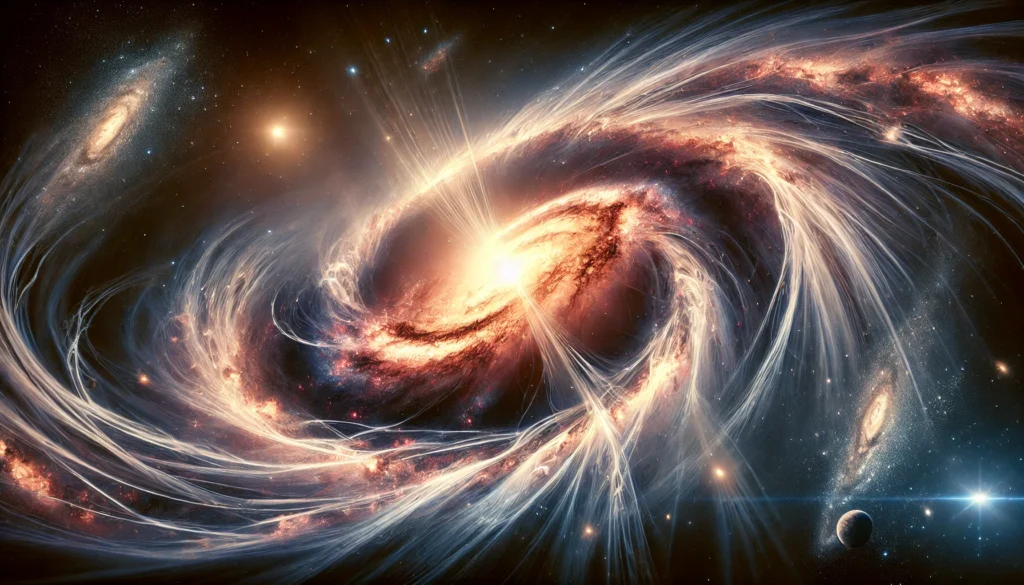
Located around 220 million light-years away in the direction of the Centaurus and Norma clusters, the Great Attractor is part of an even larger cosmic structure known as the Laniakea Supercluster—a vast network of over 100,000 galaxies interconnected by gravity. Scientists believe that its overwhelming pull is caused by the combined mass of galaxy clusters, dark matter, and possibly even an undiscovered supermassive structure deep within this region. However, since the Great Attractor lies behind the thick dust clouds of the Zone of Avoidance—a region of the sky obscured by the Milky Way’s core—it has been incredibly difficult to observe directly.
Astronomers have used radio and X-ray telescopes to peer through this cosmic veil, revealing that the Norma Cluster (Abell 3627), one of the most massive galaxy clusters in the known universe, is a major contributor to this gravitational pull. However, recent studies suggest that the Great Attractor may not be a single object but part of an even grander structure beyond it—the Shapley Supercluster, one of the densest concentrations of galaxies ever discovered.
Despite decades of research, the true nature of the Great Attractor remains one of the greatest unsolved mysteries in cosmology. Is it a massive unseen cluster? A concentration of dark matter? Or part of an even larger cosmic current shaping the fabric of the universe? As astronomical technology advances, scientists continue to unravel the secrets of this invisible cosmic force, hoping to understand the true structure of the universe and the hidden forces that sculpt it.
8. Neutron Star Collisions – The Gold Factories of the Universe
Neutron stars, the ultra-dense remnants of massive stars that have undergone supernova explosions, are among the most extreme objects in the universe. When two neutron stars spiral inward and collide, they unleash an unimaginably powerful explosion known as a kilonova—an event so energetic that it forges some of the heaviest elements in existence, including gold, platinum, and uranium, in just seconds.
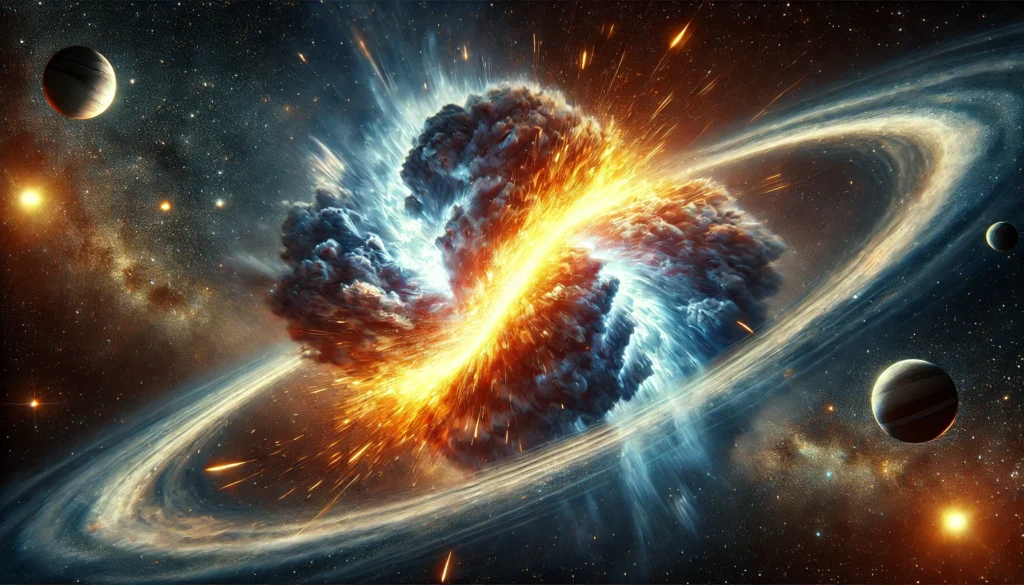
The collision of these incredibly dense stellar corpses releases a massive amount of gravitational waves, ripples in the fabric of space-time first predicted by Einstein’s general relativity. These waves travel across the cosmos and can be detected by instruments such as LIGO (Laser Interferometer Gravitational-Wave Observatory) and Virgo, allowing scientists to observe these cosmic crashes not just through traditional light-based telescopes, but through the very distortions of space itself.
The aftermath of a neutron star merger generates a fireball of debris, sending out intense bursts of gamma rays, X-rays, and radio waves, which can be observed across galaxies. These collisions are also thought to play a crucial role in enriching galaxies with heavy elements, ultimately seeding planets—including Earth—with precious metals like gold. In fact, the gold in your jewelry likely originated from one of these dramatic cosmic events billions of years ago.
Observing neutron star mergers has provided groundbreaking insights into the nature of extreme matter, the behavior of space-time under intense gravitational forces, and the origins of elements crucial to life and planetary formation. The first confirmed detection of such an event, GW170817, in 2017, marked a historic moment in astrophysics, offering direct evidence of how some of the universe’s most valuable elements are created.
These cosmic gold factories continue to captivate scientists, proving that even in their violent deaths, stars shape the universe in spectacular ways.
9. Tidal Disruption Events – When Stars Get Shredded
One of the most catastrophic and violent fates a star can encounter is being torn apart by the immense gravitational pull of a black hole in an event known as a tidal disruption event (TDE). When a star drifts too close to a supermassive black hole—typically located at the center of a galaxy—intense tidal forces distort and elongate it into a thin, noodle-like structure in a process called spaghettification. Eventually, the star is completely shredded, with its remains spiraling toward the black hole.
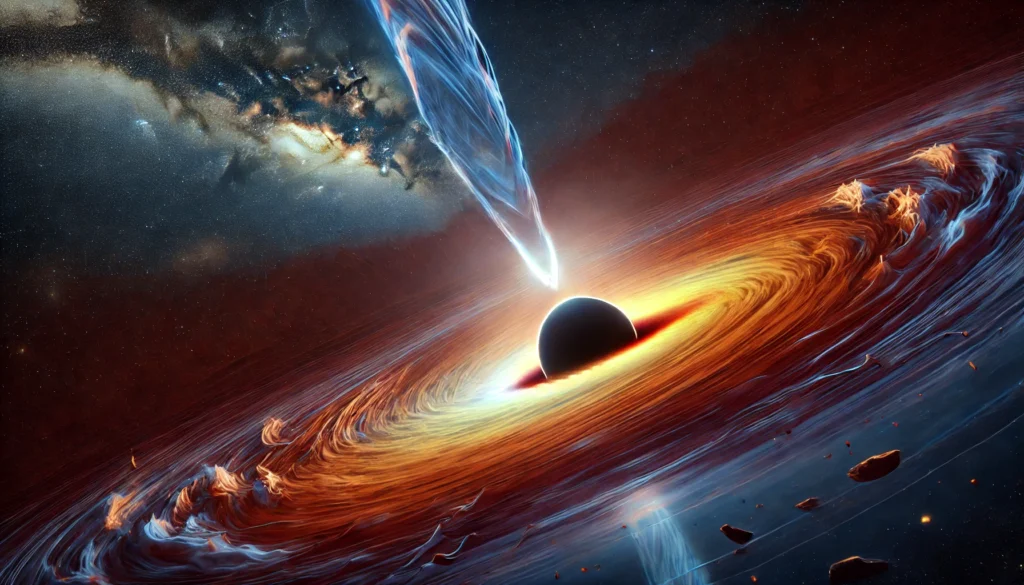
As this stellar debris forms an accretion disk around the black hole, it heats up due to extreme friction, producing powerful bursts of X-ray, ultraviolet, and optical radiation. These emissions can outshine the entire host galaxy for weeks, months, or even years before gradually fading. Some of the disrupted material gets consumed by the black hole, adding to its mass, while the rest is violently expelled into space at relativistic speeds, forming high-energy particle jets.
TDEs provide astronomers with rare opportunities to study black hole feeding mechanisms and the extreme physics governing these cosmic giants. By analyzing the radiation emitted during these events, scientists can estimate the mass, spin, and accretion behavior of black holes that would otherwise be invisible. Some recent observations have even suggested that TDEs may trigger the formation of powerful magnetic fields, influencing the evolution of galaxies.
While TDEs occur only a few times every 10,000 to 100,000 years per galaxy, advancements in space telescopes and observational technology have allowed astronomers to detect more of these spectacular celestial deaths, shedding light on the hidden monsters lurking in the hearts of galaxies.
10. The Cosmic Void – The Silent Darkness Between Galaxies
The universe is not an evenly distributed sea of galaxies. Instead, it is structured like a vast cosmic web, where galaxies, clusters, and filaments form dense regions, leaving behind enormous, nearly empty spaces known as cosmic voids. These voids are some of the most mysterious and desolate regions of the cosmos, spanning hundreds of millions of light-years with barely any matter in them. They are a direct consequence of how the universe evolved and continue to expand due to dark energy—the unseen force driving the accelerating expansion of space.
How Cosmic Voids Form
Cosmic voids emerged from slight variations in the density of the early universe. After the Big Bang, matter was not evenly distributed; instead, some regions had slightly more mass, attracting more material over time. As these denser regions grew into galaxies and clusters, the less dense regions were left behind, gradually becoming larger and emptier. This process, which took billions of years, led to the development of the enormous voids we observe today.
Scientists use simulations of the early universe to predict how voids formed and how they continue to evolve. These models suggest that voids are expanding as matter moves toward denser regions, slowly stretching the cosmic web into an even more exaggerated form over time.
Size and Scale of Cosmic Voids
Cosmic voids are not just empty pockets of space—they are vast and often contain a few lonely galaxies, struggling to survive in the emptiness. Some of the largest known voids include:
- The Boötes Void – One of the largest known cosmic voids, this region is roughly 330 million light-years in diameter and contains very few galaxies compared to the surrounding universe.
- The KBC Void – Estimated to be about 2 billion light-years across, this is possibly the largest known void, encompassing our own Milky Way and contributing to an apparent underdensity of galaxies in our region of space.
To put their scale into perspective, if the Milky Way were placed at one end of the Boötes Void, it would take hundreds of millions of years for light to travel to the other end—yet, in all that space, only a handful of galaxies exist.
The Role of Dark Energy and the Fate of the Universe
Cosmic voids are also critical for understanding the ultimate fate of the universe. Scientists believe that as dark energy continues to accelerate the expansion of space, these voids will keep growing, pushing galaxies even farther apart. In the far future, the universe may be dominated by vast, empty voids, with galaxy clusters becoming increasingly isolated.
Dark energy works against gravity, pulling matter apart and stretching space itself. Because voids have lower densities, they experience less gravitational pull, allowing dark energy to dominate their growth. Over billions of years, this process may eventually lead to a “Big Freeze” scenario, where galaxies become so distant from one another that they fade into the dark, leaving behind an empty and lifeless cosmos.
Studying Cosmic Voids: Clues About the Universe’s Structure
Although voids seem like the emptiest places in the universe, they provide valuable insights into the large-scale structure of the cosmos. Scientists study cosmic voids to:
- Test dark energy theories – By measuring how voids expand, astronomers can refine models of dark energy and its effect on cosmic acceleration.
- Understand galaxy formation – Studying the few galaxies that exist in voids helps researchers understand how environment affects galaxy evolution.
- Map the cosmic web – Void studies complement large galaxy surveys, helping astronomers trace how matter is distributed on the grandest scales.
Using instruments like the Sloan Digital Sky Survey (SDSS) and the Dark Energy Survey (DES), scientists continue to map these voids with increasing precision, revealing how they shape the universe’s evolution.
The Silent Abyss of the Universe
Cosmic voids are some of the loneliest places in the universe, vast expanses where galaxies are scarce, and darkness dominates. These regions serve as natural laboratories, helping scientists understand how structure forms in the universe, how dark energy influences cosmic expansion, and what the future holds for our ever-expanding cosmos.
As we peer deeper into space, these silent, empty expanses remind us of the fragile balance between matter and emptiness, and how the vast majority of the universe is not made up of the bright, glowing galaxies we see, but of an overwhelming, silent abyss stretching across unimaginable distances.